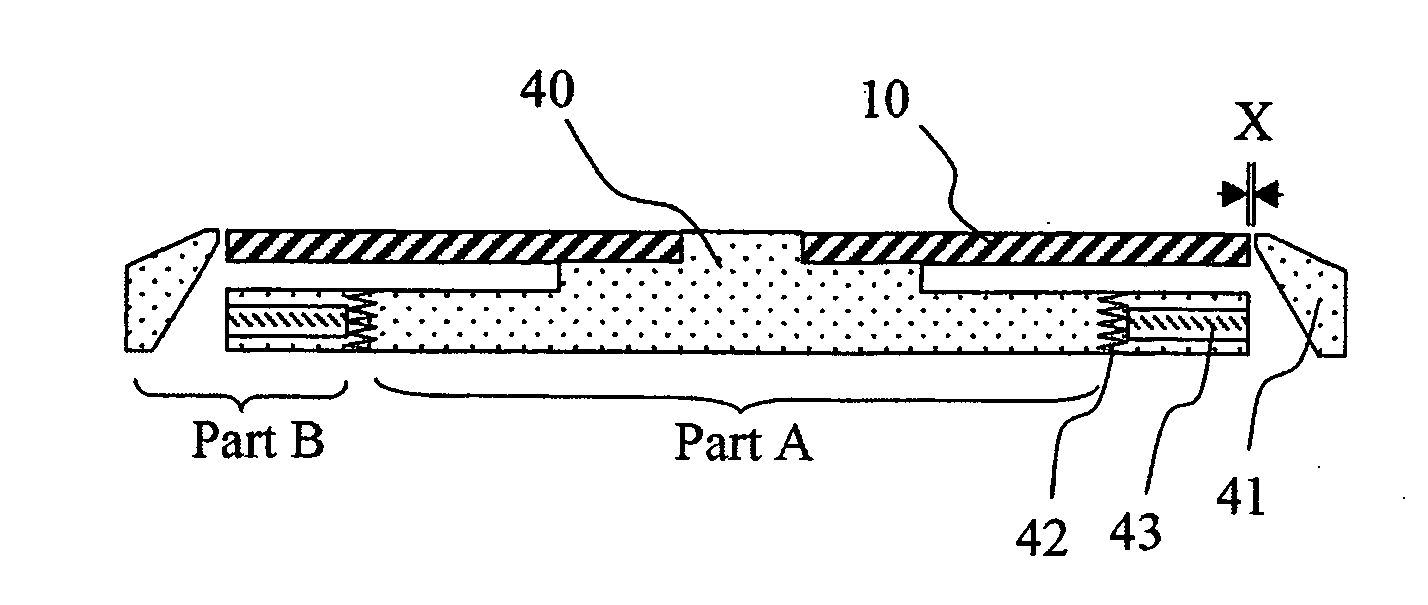Spin-coating apparatus and coated substrates prepared using the same
a coating apparatus and coating technology, applied in coatings, thin material processing, semiconductor devices, etc., can solve the problems of inability to obtain uniform coating, failure to satisfy, and difficulty in formation of uniform coating throughout the entire substrate, so as to reduce the ski-jump effect and effectively perform the spin coating operation
- Summary
- Abstract
- Description
- Claims
- Application Information
AI Technical Summary
Benefits of technology
Problems solved by technology
Method used
Image
Examples
example 1
[0050] A turntable, as shown in FIG. 4, was manufactured using an aluminum material. A spaced distance between a peripheral part of a substrate for coating and an inner upper end of a ring-shaped auxiliary member was adjusted to 0.5 mm. Meanwhile, a polycarbonate (PC)-based substrate having a total thickness of 1.1 mm, an outer diameter of 120 mm and an inner diameter (diameter of a central hole) of 15 mm was prepared by injection molding, and a four-layer structure of Ag alloy / ZnS—SiO2 / SbGeTe / ZnS—SiO2 was formed by a sputtering process, thereby preparing a substrate. The resulting substrate was mounted on the turntable and the ring-shaped auxiliary member was rotated to adjust a height of the upper end thereof to be within a deviation range of 0.05 mm, followed by fixing the height via a fixing screw. Next, EB 8402 (made by SK UCB), Irgacure 184 (made by Ciba SC), Irgacure 651 (made by Ciba SC) and a UV-curable resin including methylethylketone were spin-coated using a spin coating...
example 2
[0051] A coated substrate was manufactured in the same manner as in Example 1, except that a turntable was manufactured such that a spaced distance between a periphery of a substrate for coating and an inner upper end of an auxiliary member was 0.1 mm.
example 3
[0052] A coated substrate was manufactured in the same manner as in Example 1, except that a PC-based substrate was prepared to have a thickness of 1.2 mm by injection molding.
PUM
 Login to View More
Login to View More Abstract
Description
Claims
Application Information
 Login to View More
Login to View More - R&D
- Intellectual Property
- Life Sciences
- Materials
- Tech Scout
- Unparalleled Data Quality
- Higher Quality Content
- 60% Fewer Hallucinations
Browse by: Latest US Patents, China's latest patents, Technical Efficacy Thesaurus, Application Domain, Technology Topic, Popular Technical Reports.
© 2025 PatSnap. All rights reserved.Legal|Privacy policy|Modern Slavery Act Transparency Statement|Sitemap|About US| Contact US: help@patsnap.com



